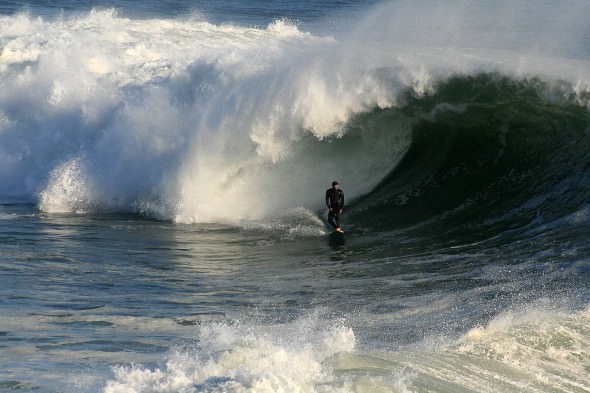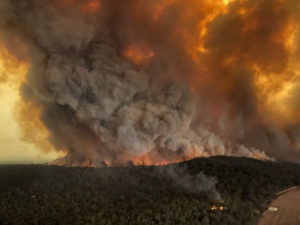Surfers Fear Climate Change Will Wipe Out Big Waves
Dedicated surfers, deeply involved with monitoring the natural coastal environment around the world, warn that climate change now poses a major threat to this booming leisure industry.
By Kieran Cooke, Climate News NetworkThis piece first appeared at Climate News Network.
LONDON — The world’s oceans are alive with surfers enjoying one of the fastest growing leisure activities. It is estimated there are now at least 35 million people around the globe who regularly ride the waves, and many thousands of people are employed in what has grown into a multi-billion dollar industry.
A warming world should be good news for all those artists of the waves. Warming oceans mean more storms, and the theory goes that more storms will lead to ever bigger waves. So why then are surfing websites — the internet is waterlogged with them — full of concern about changes in the climate?
Two studies appearing in the journal Nature Climate Change have made surfers stand up on their boards and reconsider the situation.
A study led by Dr Andrew Dowdy, a researcher at the Centre for Australian Weather and Climate Research (CAWCR) predicts that rising temperatures will in fact reduce the number of storms causing big waves by the end of the century on the central east coast of Australia.
Potentially destructive
The storms that do occur could be more intense and potentially destructive — but the consistency of wave patterns will be reduced.
That’s bad news for surfers of the future in that area — one of the world’s surfing hotspots. They’ll just have to move elsewhere. Dowdy told the Climate News Network that his projections only relate to that particular region, and they are not necessarily applicable to other coastal regions.
But another study, led by Mark Hemer, a senior research scientist at CAWCR, indicates that surfers might be having to ride smaller waves in future in other parts of the world as well.
Using ocean modelling techniques, Hemer and his colleagues predict a decrease in annual wave height over more than 25% of the global ocean area by the end of the century. The North Atlantic is likely to see a decrease in wave heights during all seasons, and waves are likely to be smaller in the winter months in the North Pacific and Indian Ocean.
But all is not lost. The study predicts that some regions — including the waters off the south coast of Australia and New Zealand — will see bigger waves of between 5% and 10% above present size averages during winter months.
Surfers are worried about other climate change related threats to their activities. There are fears that rising sea levels could threaten key surfing areas.
Surfers regularly monitor water conditions — everything from acidity levels to rubbish content and sewage levels in the seas.
Surf zone
The Save the Waves Coalition — a US-based group that lobbies to protect the coastal environment, with a particular focus on what it calls the surf zone — monitors development activities in surfing areas worldwide.
Its “endangered waves” campaign lists projects that threaten key surfing areas — from plans to construct a nuclear power station on the coast of South Africa to a series of coal-fired power plants proposed for the coast of Chile.
And Climate change is seen as a major challenge facing the surfing industry.
“The unfortunate truth is that the threats to surfing habitat are now growing exponentially due to the impacts of man-made climate change,” says the California-based Sustainable Surf organisation.
Your support matters…Independent journalism is under threat and overshadowed by heavily funded mainstream media.
You can help level the playing field. Become a member.
Your tax-deductible contribution keeps us digging beneath the headlines to give you thought-provoking, investigative reporting and analysis that unearths what's really happening- without compromise.
Give today to support our courageous, independent journalists.






You need to be a supporter to comment.
There are currently no responses to this article.
Be the first to respond.